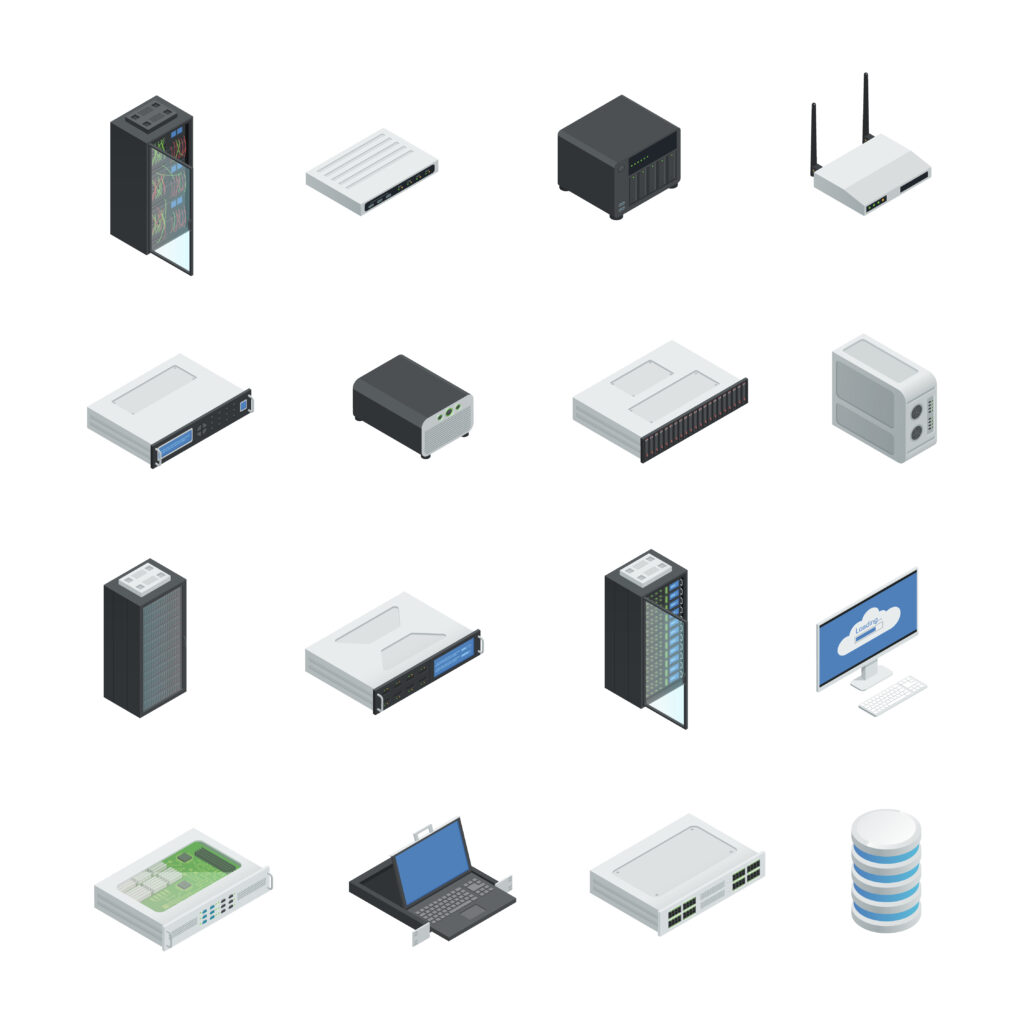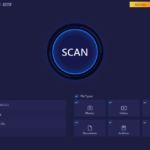Server Racks and Their Sizes
Nowadays, no business can run without a server room. Server furniture is produced in different sizes to accommodate different numbers and types of hardware. Their objective is to optimize space in an office or other premises ensuring better ergonomics. There are both small and compact models and huge cabinets that can house big servers and weigh up to 1000 kg.
However, before buying server furniture, it is important to consider its size. Cabinets are not cheap ones. Thus, you should check everything twice before making a purchase. What is so tricky about the choice of cabinet size? The thing is that you should calculate the height, depth, and width of furniture so that it can accommodate all the equipment leaving extra space for free air circulation and future system expansion.
Server Dimensions: How to Pick the Right Model?
When dealing with server furniture, it is important to understand standard server rack dimensions. Let’s see how products are measured.
How High Can Server Furniture be?
It depends on several factors, first of all, how much equipment you need to accommodate: how many servers you intend to install in the rack. You also need to consider whether the chosen height will allow you to roll the cabinet into the doorway of the cabinet or whether you will have to bring it in by hand.
For standardization of network cabinet sizes, installation heights in rack cabinets are given in U (units) that can be used in each cabinet. 1U is 1.75 inches or 44.45mm. Optimal indicators for server cabinet height are 2000 mm for 42U and 2300 mm for 48U.
If you take less, there is a risk of suboptimal use of the turbine hall space. If a larger option is selected, there may be problems with transportation and maintenance: the cabinet will be too high so it will limit the ability to maintain equipment placed on the upper layers.
How Deep Can Server Furniture be?
Any 19-inch equipment fits into a 600mm-wide furniture without any problems. But if there are no restrictions on the area, it is more convenient to use wider cabinets (750 mm and 800 mm). They leave enough space not only for servers but also for cable bundles. So, for example, cross-connects and switches are characterized by a high switching density (over 24 ports per 1U), and if the cabinet is small, wires simply will not fit there. For such equipment, server rack dimensions of 750-800mm with side cable organizers are more suitable.
A similar problem can arise when a large number of servers are placed in a rack. For each of them, it is necessary to ensure the connection of at least two power cords and several low-current cables. A wider (or deeper) cabinet will allow system administrators to distribute cable bundles along sidewalls without turning the inside into an impenetrable jungle.
How Wide Can Server Furniture be?
With depth, the situation is similar: the deeper the product is, the more convenient it is. But it’s not just about convenience: if you save on depth, there is a risk that the server simply won’t fit into furniture. The standard depth varies from 1000 to 1200 mm.
Ideally, if the depth is 1200 mm, the distance between the front and rear panels of 19-inch profiles should be at least 750 mm with mounting plates installed. Choose cabinets with the front door as convex as possible: this will allow you to push the front profiles as far forward as possible without interfering with the connection of patch cords and USB devices.

Image by Freepik
Other Parameters to Consider When Picking Cabinets
- the presence of perforation of the front and rear doors for cooling equipment through free airflow;
- ensuring unhindered exit of hot air outside the cabinet due to the cooling system or perforation in the upper part of the product;
- the static load of furniture must correspond to the declared one and allow to place the intended equipment;
- the distance between the front rails corresponds to the standard for placing servers and equipment 19″;
- the presence of technological holes for cable entry in the lower and upper parts of the model;
- the presence of grounding elements to combine the structure into a single electrical circuit;
- the presence of removable side walls for easy installation of equipment;
- the presence of locking elements to protect against unauthorized access;
- adjustable supports for fixing the cabinet in a horizontal plane.
Types of Server Racks
If judging by construction types, two classes of products are distinguished:
- Open-frame models
These are metal constructions consisting of two or four vertical posts. Special holes are provided on them to fasten server equipment. Such products are designed for installation in closed data centers since they do not provide protection from unauthorized access. If you need a server rack or cabinet, visit https://sysracks.com/catalog/open-frame-network-server-racks/ to find a wide assortment of models of any size and construction.
The main advantages of such models include ease of access for maintenance from all sides, free air circulation and natural cooling, lightweight which contributed to better portability.
- Enclosed models
These are enclosed metal boxes with side panels and doors. They are lockable; thus, they provide a high level of security and reliably protect the accommodated hardware from damage. Such models are suitable for mounting in both closed rooms and public places.
However, drawbacks include worse air circulation (forced fan systems are used, doors are perforated), limited space, worse portability since such enclosures are heavier.
According to the type of mounting, they distinguish:
- Floor-standing products
- Wall-mount models
The main difference is load capacity. Floor-standing cabinets can hold more equipment. Wall-mount products are smaller and have load restrictions.
Note that most modern server furniture is equipped with removable casters to make cabinets portable and mobile.
The modern market offers diverse options for housing server hardware. A model range starts from small wall-mount cabinets and reaches huge floor-standing racks. However, before buying this kind of furniture, you should treat server racks sizes thoroughly. Consider all the three main dimensions taking into account facts provided in the article, do not place devices too tightly, and do not forget to leave enough free space.
Cover Image by Freepik












